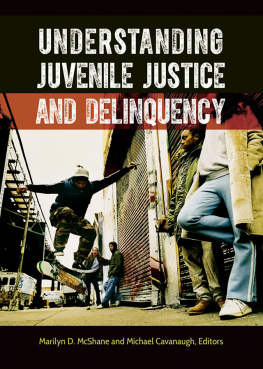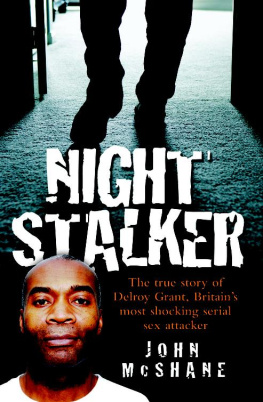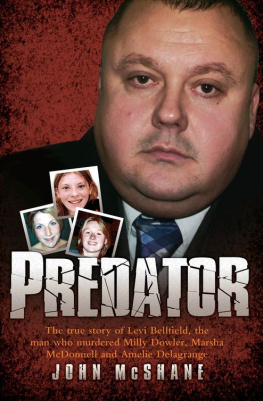AUTHORS NOTE
VIEWING THE ART
The Internet provides the best opportunity to view historic paintings in all their colorful splendor. One of the best places to find virtually all of the works mentioned in the forthcoming pages is The Art Resource at:
www.artres.com/c/htm/Home.aspx
Type in search like this: Pollock, Jackson, Name of Painting.
Additional web pages that provide a similar service can be found at:
www.artrenewal.org/index.html
www.wga.hu/
www.artres.com/c/htm/Home.aspx
www.globalgallery.com
To view the art stolen from Bostons Isabella Stewart Gardner Museum in 1990, (Chapter 18), go to the FBIs web page at:
www.fbi.gov/hq/cid/arttheft/northamerica/us/isabella/isabella.htm
There is a $5 million reward for information leading to their recovery.
EPILOGUE
A T MY RETIREMENT party in September 1994,I was given the standard gold watch. After wearing President George H. W. Bushs gleaming Rolex Presidential for all those years, the functional Seiko was a bit of a letdown.
It would have been nice to ride off into one of Manets glorious sunsets with the ol familiar upgraded timepiece, but then again, they werent going to let me fly away in William Sessionss jet, or roll down the road in J. Edgar Hoovers limo either.
Stuffy regulations and all.
Besides, those trappings of wealth were never mine to begin with. They belonged to Thomas Bishop, Robert Steele, Thomas Russell, and my other alter egos.
As I observed everyone happily celebrating the end of my career, it occurred to me that only Thomas McShane was retiring to a golden trout stream. Bishop, Steele, Russell, and the rest were being rubbed out, buried, and forgotten.
Such a realization can often be traumatic to undercover agents. In the absorbing Arizona political scandal book, Whats In It for Me?, former mob associate turned undercover operative Joe Stedino movingly described the unexpected demise of his alter ego, Tony Vincent. Stedino had transformed himself into a powerful, high-living, cash-happy gangster who showered money on politicians willing to sell their votes for a casino gambling initiative. It was a role Stedino relished, a character that was everything hed always wanted to be. One morning, in the midst of the wildly successful sting, Stedino discovered that his cover had been blown by a reporter jumping on a scoop.
Whatever the journalistic intrigue, one thing was certain, Stedino wrote. Tony Vincent was deadmurdered by the morning newspaper.
I know the feeling. Although the demise of my alter egos had been less sudden, the result was no less painful.
The conflicting images of my schizophrenic existence were everywhere that festive afternoon in Oklahoma. My three children, Tommy Jeff, 17, Danielle, 15, and Marianne, 11, were there. They belonged to Thomas McShane. Aside from the occasional growing pains and wild oats sowing, they were mostly a joy. Their mother, however, was not present. We had separated four years earlier, and would be divorced two years later. The marriage fell victim to my multiple personalities.
My wife married Thomas McShane, a white-shirted, dark-suited, government attorney who was supposed to punch a clock from nine-to-five, pick up the kids from football and cheerleading practice, then come home for dinner. She had not married the art pimp Thomas Bishop, the player who was up all night, always in the company of bad men, and often in the company of both good and bad women. She had not married Robert Steele, who hopped jets at a moments notice to track a stolen painting around the globe, unable to risk calling home, or to give any details as to where he was, what he was doing, when he was coming home, or even who he was pretending to be. She had definitely not married Thomas Russell, who shadowed and wiretapped some of Americas deadliest and most vengeful mobsters, then testified against them in open courta civic duty that put her in constant fear of violent retribution.
Nothing new there. Undercover agents and broken marriages go hand-in-hand. Its a sad clich, but bitingly true. The clandestine life is indeed hell on a relationship. I commend my wife for putting up with it, and me, for as long as she did.
The melancholy swept over me again that afternoon when I was presented with a replica sculpture of The End of the Trail, James Earl Frasers war-weary Native American warrior. It was an appropriate piece, and I appreciated my bosses and coworkers for making the effort to give me something artistic. Yet, the contrast was staggering. Bishop, Steele, and Russell had touched, felt, recovered, and been inspired by some of the greatest masterpieces the world has known, more than $300 million worth and rising by my last accountingpaintings that now adorn the walls of such places as The Louvre in Paris.
Thomas McShane? He was dispatched with a $100 watch, and a $50 copy of a plaster sculpture that sits in the Cowboy Hall of Fame in Oklahoma City.
Not that Im complaining. Nor did I expect anything more. To the contrary: During most of my wild and woolly career, I felt like I was stealing my paycheck. I wouldnt have traded all the adventures for anything. Those feelings aside, it was definitely a rather ironic moment.
Still, even as I painted on the happy smiles, I couldnt help feeling waves of sadness. One of my longstanding regrets is that I was never able to train a protg in my special field and pass the black light torch to him or her as Don Mason had done with me. Id tried numerous times in New York to get someone interested, but frequent transfers, and the increased focus on terrorism, kept moving people around. That, and the fact that 25 years later, art theft remains an eclectic field that wasnt accepted as properly macho by the tight-knit G-men fraternity.
My recruiting efforts were akin to Agent K in Men in Black telling Will Smith that he would have to give up his life as he knew it, including all his friends, lovers, and relatives, if he wanted to work for the governments secret space alien agency.
Complicating matters was the fact that my transfer to Oklahoma City jettisoned me from Manhattans bustling art world. Any chance of finding and schooling a last-minute Agent J vanished with the move.
The FBI continues to work art theft cases, but despite the increasing scope of the crime, still only has a single agent specializing in it full-time. And this one works out of the Philadelphia office instead of art world central in Manhattan. Thats all equally disheartening.
Near the end of the retirement party, as the last grains of sand were sliding through the career hourglass, I thought back to the day I started with the FBI 25 years previously. As detailed in the Introduction, I had to hit the ground running when two fellow FBI agents were ambushed and killed by a bank robber.
In contrast, my retirement, at least at that moment, was more in tune with General Douglas MacArthur, the idol of the whacky Ben-Hur stuntman from Chapter 15.I felt like an old soldier who had faded away like an ancient Renoir watercolor.
My mentor, Mason, went out with a splash in 1976. We had spent the previous year tracking a half-million-dollar painting by nineteenth- and twentieth-century Russian artist Wassily Kandinsky entitled Leise Deu-tung (Soft Interpretations) that was stolen from famed movie director Otto Preminger. It was snatched from Premingers Fifth Avenue New York office by the advertising salesman boyfriend of his secretary. The case was especially interesting because Kandinsky was known as The Father of Abstract Art and Preminger was the Father of Abstract Film Noir, a style rooted in hard-edged, dark-themed German expressionism. (Kandinskys best oils sell for $6 million today.)
After chasing it halfway across the planet, we finally located it in Basel, Switzerland, and grabbed it back. On the day he retired, Mason was able to present it to the great director at a flashy news conference.







